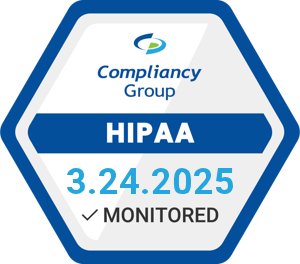As seen in – Applied Clinical Trials
October 20, 2021

Decentralized Clinical Trials (DCTs) have taken the main stage in the clinical trials industry, which was significantly facilitated during the pandemic. However, similar to the initiation of risk-based monitoring (RBM), the concept of DCTs is at an infancy stage, and many enterprises are competing to make their mark in the field. This prompted the formation of the Decentralized Trials & Research Alliance (DTRA) to help better define and advance DCTs. In this article, Dave Hanaman, Co-founder of Curavit, will discuss his perspectives on DCTs.
Moe Alsumidaie: What is a Virtual CRO (VCRO)?
Dave Hanaman: Co-founder Joel Morse and I conceived the company from our experience at C3i, where we spent 20 years at the intersection of digital technologies and clinical research. We saw this space evolving for years and wanted to disrupt research by positively applying technology in new ways. So we launched Curavit officially in November 2019 and became the first virtual CRO—a contract research organization dedicated exclusively to designing and executing decentralized clinical trials.
As a VCRO, Curavit runs fully decentralized trials from start to finish and acts as a virtual site, managing the decentralized components of a hybrid clinical trial. We leverage industry-leading digital technologies, devices, and our cloud-based DCT platform to centrally capture, aggregate, manage, and analyze trial data for sponsors. Curavit also brings specialized therapeutic expertise for decentralized trials to ensure the most proficient minds and the best technologies are applied to every research study.
As a VCRO, Curavit runs fully decentralized trials from start to finish and acts as a virtual site, managing the decentralized components of a hybrid clinical trial. We leverage industry-leading digital technologies, devices, and our cloud-based DCT platform to centrally capture, aggregate, manage, and analyze trial data for sponsors. Curavit also brings specialized therapeutic expertise for decentralized trials to ensure the most proficient minds and the best technologies are applied to every research study.
DH: Yes, and the technology is catching up to the vision. In 2007, Veeva introduced cloud-based CRM to an industry desperate for lower-cost technology models because so many major brand-name blockbuster drugs were coming off patent. Veeva’s well-touted success is an example of the right solution at the right time. Decentralized trials are similarly destined, supported by developments in IoT, wearables, and big data. People have been working to make DCT a reality for years, but the technology is finally maturing and readily available while the industry is calling for a greater focus on patients and access to trials for all. So once again, we have a case of the right solution at the right time.
MA: Are there concerns around data privacy and what precautions is Curavit taking to protect it, especially now where the U.S. and many Western nations are under attack by foreign hackers. What can be done to address those concerns using a DCT model for research?
DH: From banking to life sciences, every industry is extremely concerned about protecting data. As in most things, there are tradeoffs. Decentralized trials that do not involve sites can be an advantage in limiting data risk. DCTs can be much more secure in many ways because you can centralize data in very safe, modern cloud systems. That is what Curavit is doing.
Curavit’s platform has been purpose-built for decentralized trials with proven, industry-leading software. HIPAA compliance and validation are built into the individual tools as well as the overall platform. No corners were cut in terms of applying modern cyber defenses.
MA: Part of Curavit’s vision is to make research more accessible across all the demographics. How are you expanding clinical trials to those demographics through DCTs?
DH: First, DCT technologies and processes are fundamentally more suited to reaching previously underserved or underrepresented patient populations. It’s easier to expose more people to the opportunity to participate in research across social media, digital communities, and websites supporting specific diseases or conditions.
Second, and more specifically, DCTs leverage community-based outreach. For example, we partner with Clinispan out of North Carolina whose purpose is to recruit underserved populations. Par 80 in Boston partners with community health centers serving minority populations. These efforts reach out to minority populations to include those who distrust or have not been previously exposed to research.
Third, we have had ongoing discussions with a global pharmaceutical company interested in Native American populations that embody two distinct underserved groups: indigenous and rural populations.
MA: Where do you see DCTs going in the next ten years?
DH: Optimistically, in 10 years, we won’t think of DCTs as unusual because the technologies and processes will be commonplace. DCTs won’t be any more novel than computerized businesses are today.
Most data capture will be in the cloud a decade from now, and DCTs will enable a more burdenless patient research experience. To clarify, that doesn’t mean face-to-face interactions with physicians will go away. Even in complex therapeutic areas like oncology, there’s plenty of opportunities to use digital technologies to gather new data and reduce patient burden. We won’t think of DCTs as a distinct subset. In 2031, DCTs will have disrupted clinical research in profound ways that are better for all patients, better for all sponsors, and ultimately better for public health.










